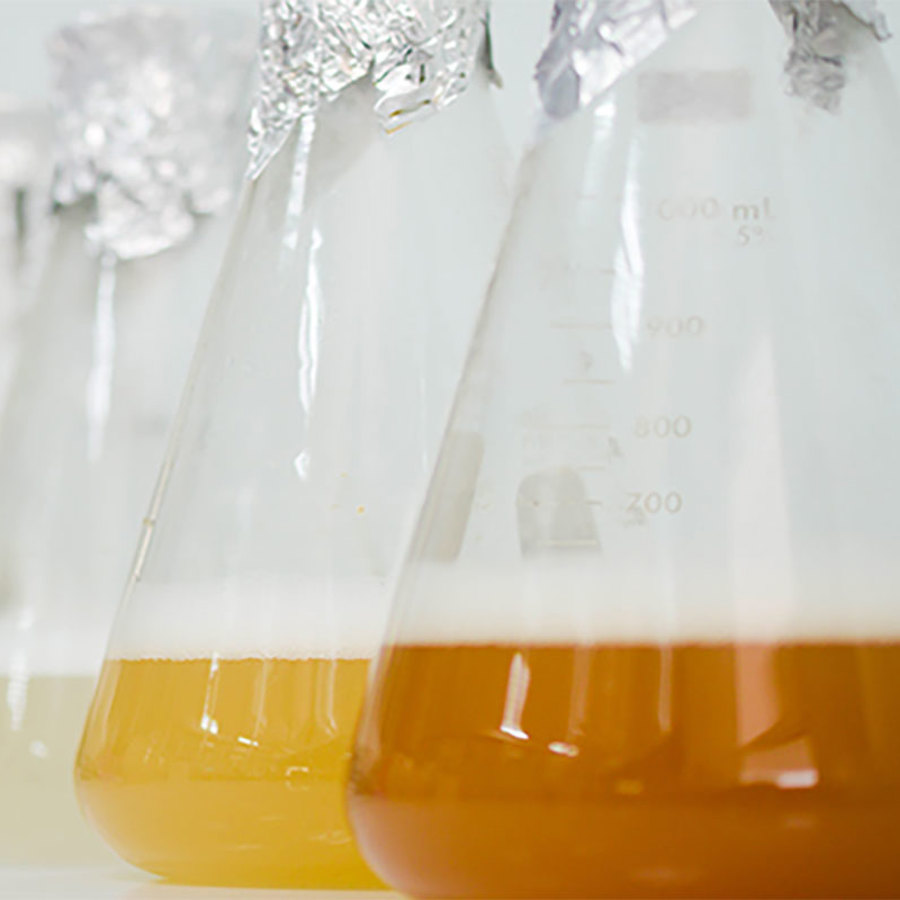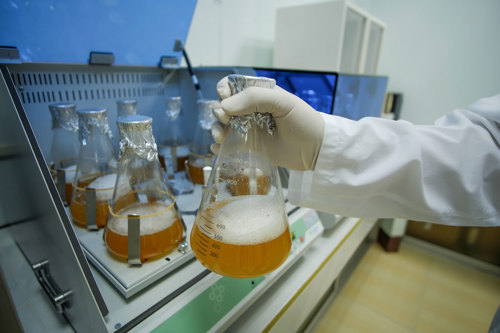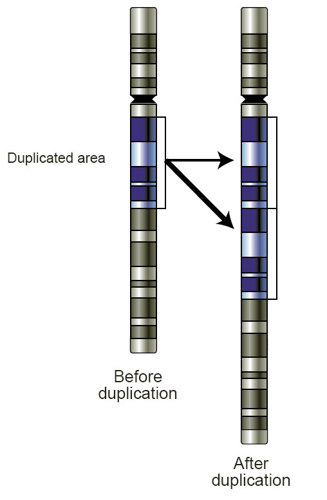
Are there examples of traits that require many new mutations?
September 28, 2012

A curious adult from California asks:
“It seems to me that since good mutations are so rare, any trait that requires a lot of mutations shouldn’t happen. Are there any real examples of something like this happening? Where many mutations lead to a new trait?”
Yes indeed there are. And this isn’t something limited to the distant past. Scientists can also observe mutations and traits in a laboratory setting.
One study in particular described bacteria that got a new trait based on multiple mutations. Not only that, but the first few mutations had nothing to do with the newly acquired trait. They were just random, background DNA changes that proved useful once the key mutation fell into place. Without these earlier mutations, that key DNA change wasn’t strong enough to start the process of gaining that new trait.1
This is amazing stuff and shows in a real life experiment how a trait can develop even if it takes more than one step to get there. A blind watchmaker indeed.
The 50,000 Generation (And Counting) Experiment
Since evolution takes such a long time, researchers can’t do real-time experiments on people or mice. No, they need to go for beasts that can reproduce in hours or even minutes. Which is why scientists tend to focus on bacteria and yeast.
The most complete evolution experiment to date is being done at Michigan State in the Lenski lab. They have had twelve separate populations of the bacteria E. coli growing continuously for the last twenty four years. In bacteria, this amount of time translates to over 50,000 generations. That is equivalent to one million human years!
One of the most interesting traits to appear in one of the twelve populations is the ability to use citrate for food when oxygen is around. It is so rare for E. coli to ever be able to do this that this lack of ability is one of the defining features of being an E. coli.
All twelve populations were grown in the presence of citrate but only one managed to gain the ability to use citrate as a carbon source when oxygen is around. In other words, only one out of 12 times did a bacterial population stumble on the right combination of DNA changes.
This tells us that this is not a simple, one step process. If it were, every population would have developed the ability.
Another indication that it wasn’t trivial to gain this new ability was how long it took. The researchers first noticed the trait when they found that one of their populations started growing to a higher density at around generation 33,000 or so. (Higher density just means more bacteria in the same amount of liquid.) A closer look showed that this was due to their ability to now use citrate as a carbon source in the presence of oxygen.
Because the lab freezes samples from the growing cultures on a regular basis, they were able to go back and actually see the trait evolving. They could see the defining change around generation 31,000, figure out what changes happened between generations 31,000 and 33,000 that strengthened the trait, and figure out the additional changes that had to happen in order for that change at generation 31,000 to be effective. Wow.

Tilling, Planting, and Growing
When the researchers investigated these bacteria, they found three steps were necessary to get the bacteria to use the citrate. They called them potentiation, actualization, and refinement. You can think of these like planting crops.
Potentiation: This is like getting the field ready for planting. The bacteria needed to develop the right genetic background so that the new trait could get a foothold.
Actualization: This is like planting a seed. The bacteria, through random DNA changes, had now developed the mutation that would allow it to one day grow using citrate in the presence of oxygen.
Refinement: This is like the seed developing and growing into a plant. The bacteria needed to improve the trait through additional mutations so that it could be useful.
I don’t want you to come away thinking these changes were planned though. They weren’t. They were the result of random mutations that built up over thousands of generations.

Growing a New Trait
Here’s how they think it went down. I am going to start with the second and third steps because they are the most clear and then get back to the first one.
The main hurdle to E. coli using citrate in the presence of oxygen is that it can’t get the stuff inside of itself. So the key DNA change had to be a way to get the citrate into the cell so the bacteria could use it as a carbon source.
As you may have noticed, I keep emphasizing that the bacteria are using citrate in the presence of oxygen. I do this because E. coli can use citrate when there is no oxygen around. Which means it already has a way to get citrate inside of a cell in the absence of oxygen.
The key DNA change was to make it so the gene responsible for moving citrate into the cell, the citT gene, would now work in the presence of oxygen. This was accomplished the way cells often do this, by making an extra copy or duplicate of the cell and putting it somewhere else in the DNA.

See, the citT gene has DNA around it that keeps it from working when oxygen is around. By removing it from this DNA, the gene was now free to work whenever.
But just barely! The change by itself was too weak to do much of anything unless there were some earlier mutations that boosted it a bit. It needed the right genetic background to have a chance to be useful to the bacteria.
The key to making the bacterium with this mutation able to take over the flask happened through more duplications. More genes often mean more activity and this was the case here. The extra copies of the citT gene removed from its natural habitat made these bacteria so good at using citrate that the other bacteria in the flask never had a chance.
Sounds simple enough except that the key, driving mutation should happen pretty commonly. In fact, follow up experiments showed that it does indeed happen fairly often in E. coli. And yet, most bacteria did not go on to become big citrate users.
The reason for this is that the mutation has to happen in the presence of other DNA changes that give no advantage. This is the most fascinating part of the story.
The researchers looked at many different backgrounds of many different generations and found that the first duplication of the citT gene only worked well in the background of the cells it came from. In other words, if the duplication happened in the other strains (as it almost certainly did), it couldn’t work well enough to be used as a starting point for the new trait. The ability to use citrate when oxygen is around would never strengthen and be seen.
Further work showed that at least two new mutations were needed for the mutation to have any effect. Even though they haven’t yet found the two responsible mutations (although they do have at least one likely candidate), this doesn’t really matter for the story here. Because the appearance of the trait depended on which strain they used, it had to depend on DNA changes that were peculiar to that particular strain. Remember, every strain started from the same single bacterial colony twenty four years ago.
In a final set of experiments, they “replayed” the original experiments using various generations of various strains. What they found was that the mutation popped up in the strain with the right background and wasn’t seen in the others.
The reason it wasn’t seen in the others wasn’t that the DNA change never happened there. It is just that the change in the wrong background gave no advantage and so the bacterium with the change couldn’t dominate its flask. The occasional DNA change would pop up, maybe hang around for a while and then disappear.
So random DNA changes allowed a later DNA change to give a bacterium a new advantageous trait. Without the random changes, this new trait could not have appeared as is evidenced by the fact that it has yet to appear in the other flasks. And that the change does not give rise to a selectable trait in the wrong background.

Author: Dr. Barry Starr
Barry served as The Tech Geneticist from 2002-2018. He founded Ask-a-Geneticist, answered thousands of questions submitted by people from all around the world, and oversaw and edited all articles published during his tenure. AAG is part of the Stanford at The Tech program, which brings Stanford scientists to The Tech to answer questions for this site, as well as to run science activities with visitors at The Tech Interactive in downtown San Jose.
 Skip Navigation
Skip Navigation
